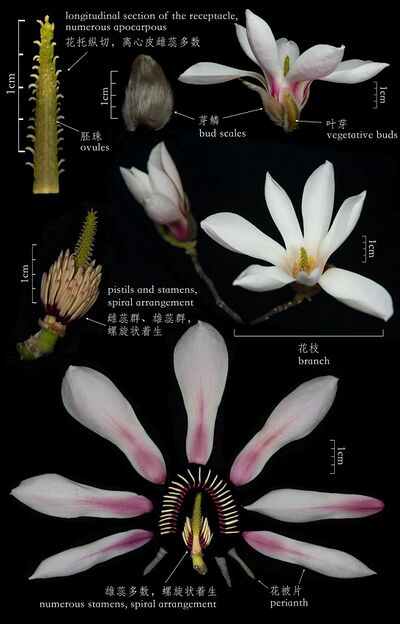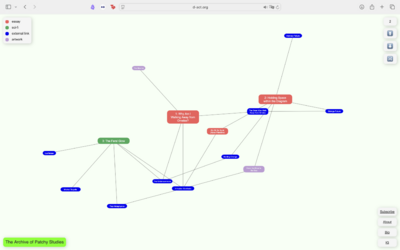[006]
Extending Horizons: The Praxis of Experimental Publishing in the Age of Digital Networks
Individual
critical
This dissertation is focused on the practices of experimental publishing that are intertwined with digital and networked technology, and borrow strategies derived from the context of arts and design. In order to build a model of interpretation of such practices, Lorusso defined a theoretical framework, made an overview of influential perspectives within the field, and carried out an investigation of the ‘communities of practice’ in which experimental publishing takes place. Lorusso analyzes a phenomenology of projects that highlight the characteristics of an experimental approach in each specific stage of the publishing process. Finally, I developed an online archive for the purpose of categorizing and connecting the different case studies. The main question addressed is:
15.12.25
[019]
Syntax Magazine
Collaboration
experimental
Syntax is an online magazine using the grammar of the internet. The editors letter of Syntax's first edition reads:
"Digital media promised us new modes of reading. Instead, we got sound bites and “which One Direction member should you date” quizzes. Scrolling online became an experiment in self-defense: we’re bombarded by paywalls and pop-up ads, lured by A/B tested headlines and microtrend pieces. [...]
But no one writes how we read. In chat rooms, comment sections, forums, personal blogs. The video essay, the playlist, Tumblr collage—these forms are as familiar to us as the novel, film, and album. Their words would never reach the true citizens of the internet.."
And so, Syntax provides a honest reflection of what pre-capitalist internet.
“So we go back to the blog. Repurpose the zine. We’re sending our reply using the grammar of the internet.”
15.12.25
[043]
A Reparative Approach to Publishing
Collaboration
The article "A Reparative Approach to Publishing" discusses Constant, a collective focusing on open-source, community-driven publications. Their projects include various forms of "executable texts" like manuals and codes, emphasizing collaborative creation and iterative processes. Platforms like Books With An Attitude and Constant Verlag host these works under open licenses. The piece highlights the importance of trust, collective authorship, and dynamic, editable content, advocating for a publishing practice that embraces change, diversity, and community involvement over individual genius and static texts.
It is part of MARCH's long term inquiry, "Publishing As Protocol", which aims to explore the relationship between self-organizational models and technological sovereignty. It gathers existing and speculative examples from both institutional (cultural) and technological (hacktivist) practices to reflect on how we publish, gather and organize under (and around) platform capitalism.
“A reparative, intersectional, and feminist approach to publishing means a networked approach, set up for working best when it is cared for by one or many communities.”
15.12.25
[079]
PoetiCal
Individual
experimental
PoetiCal is an experimental, collaborative publication only accessible through a calendar app.The only way to access this publication is through a calendar app.
The emergence of platforms such as Poetical.day marks a transformative shift in how individuals engage with and share their creative voices through digital media. Enabling collective publishing through this platform (albeit subject to curatorial selection first) is not just about facilitating content creation, but more about fostering community, as the shared human experience of everyday life is highlighted in form and context. The power of such a 'collective publishing platform' lies in the ability to contribute, collaborate and engage with others in small ways.
15.12.25
[083]
DAISYWORLD CAL
Individual
experimental

An anatomical diagram of the flower of Magnolia biondii, by Zazie Stevens
DaisyWold MAG has reinvented itself as DAISYWORLD CAL, an ongoing anthology that follows the ancient Japanese calendar of 72 micro-seasons, a system that intricately maps time by recording subtle changes in nature. In this rhythm of fleeting moments, the micro-seasonal online calendar becomes a poetic bridge between the digital and the organic, celebrating the ephemeral permanence of life. It is a tribute to the capricious beauty of nature, an ode to all that blooms, withers and returns to the earth - an eternal cycle of impermanence and renewal.
By adopting a publishing format that follows seasonal shifts and metamorphoses every 5 days, this micro-seasonal online calendar poetically fuses the digital with the natural and the ephemeral with the ephemeral.
Although 'hidden' behind a paywall, Daisyworld Cal is a refreshing break from conventional media cycles, acting as a shared notebook of sorts, housing quotes, audio, recipes and other snippets worth 'standing still' for. In a world driven by speed and instant gratification, this rhythm encourages bite-sized engagement, attentive to incremental change. While maintaining a mailbox-first approach, Subtack's publication does not fall into the trap of explicitly centering the authors' lived experience as a prompt for reflection on wider contexts. The publication format, while online, decentres the digital-only affliction of promoting a false sense of urgency and shifts the focus to (digital) storytelling in form and content as an ode to the cyclical, evolving process in which storytelling and observation naturally unfold.
“Eulogizing the capriciousness of nature and all that blooms and is destined to die.”
15.12.25
[088]
The Archive Of Patchy Studies
Individual
critical

Archive Of Patchy Studies (screenshot) by Noam Youngrak Son
Archive of Patchy Studies is a living, diagrammatic platform by Noam Youngrak Son that maps knowledge through a rhizomatic, non-extractive interface. Designed as a motherboard of interconnected nodes-ranging from essays and images to links and notes-it visualizes conceptual, aesthetic, and affective relations without relying on rigid taxonomy. The archive grows organically, shaped by conversation, intuition, and resistance to capitalist tempo.
Rather than simply storing information, it proposes an alternative infrastructure: one where artistic labor circulates relationally and ethically, inviting slower, situated forms of engagement and meaning-making over time. Some content remains open; other nodes are accessible via subscription.
Diagrams, especially interactive, rhizomatic ones like Son's 'rhizomatic motherboard', challenge traditional data visualisation norms by turning static charts into dynamic, interconnected maps. Unlike dashboards or classification-driven graphs, these diagrams emphasise emergence, fuzziness and mutual causality. Treating the connecting nodes as active elements rather than fixed data points emphasises the importance of non-hierarchical, networked representations, and illustrates how diagrams can become lively and inclusive infrastructures.
“Over time, I hope this platform becomes not just an accumulation of information, but a transformative infrastructure: a space where artistic labor is not extracted, but comes to obtain other forms of value mutually.”
15.12.25
[089]
Becoming the Product: The Critical Internet Researcher as a Virtual Intellectual
Individual
critical
In Becoming the Product Morgane Billuart traces the evolution of critical internet research, examining the work of figures such as Geert Lovink, Joshua Citarella, Alex Quicho and Sophie Public. Exploring how researchers navigate the demands of the attention economy, the book reflects on the tension between critique and commodification as it traces the shifting strategies of critical research under pressure to perform, produce and build a brand. What happens to critique when intellectual labour becomes part of the content economy? What does it mean to think critically and sustainably online?
Through her own practice, Morgane’s inquiry blurs the line between critique and performance. By hosting two podcasts and maintaining a presence across multiple platforms, including Substack, Instagram and YouTube, she doesn’t just study the dynamics of online visibility — she embodies them.
Her tone shifts from theoretical to personal, revealing a methodological agility attuned to platform aesthetics. By tapping into the systems she critiques, Morgane challenges the divide between observer and participant, and between content and critique. Rather than resolving this tension, her work inhabits it, showcasing the messy, strategic entanglement of intellectual labour and platform capitalism. This is a form of research that is experienced and performed as much as it is written: a vulnerable and incisive mode of enquiry that is shaped from within the infrastructures it studies.
15.12.25

